When I stood in the heart of Ulm, Germany, I couldn’t look away from the towering Ulm Minster. This church claims the record for the tallest steeple in the world, soaring up to about 162 meters.
Its Gothic spires seem to poke right into the clouds. The promise of unbeatable views was enough to make me want to face my fear of heights.
Climbing the 768 steps up the narrow staircase was no joke—my heart raced for several reasons. With each turn, Ulm stretched out wider below, and I caught glimpses of the blue Danube and even the distant Alps.
The higher I went, the more my vertigo kicked in, but honestly, so did the excitement.
When I finally reached the viewing platform, I felt equal parts dizzy and amazed. The sweeping views left no doubt—Ulm Minster is a must for anyone visiting this part of Germany.
If you’re on the fence about the climb, trust me, the scenery at the top is worth every shaky step.

Discovering Ulm Minster: A Gothic Marvel
Standing in Ulm, I just had to look up at the spire that dominates everything. This massive Gothic church has shaped the city’s skyline and story for ages.
People come from all over Germany and beyond just to see it.
The History and Legacy of the Tallest Church in the World
Builders started Ulm Minster, or Ulmer Münster, way back in 1377. I can’t imagine how ambitious that must have seemed.
They kept at it for over 500 years, which is kind of wild. It finally reached completion in 1890, long after the Middle Ages had ended.
When they finished the main spire, Ulm Minster officially became the world’s tallest church.
| Height | Completion Year | Original Religion | Current Affiliation |
|---|---|---|---|
| 161.53 meters | 1890 | Roman Catholic | Lutheran |
The people of Ulm built this church for themselves, not for a religious order. That made it stand out.
Over the years, both power and faith shifted. Now, this grand cathedral is Lutheran.
Climbing it connects me to all the pilgrims, townsfolk, and travelers who have done the same.

Architectural Highlights of the Ulm Minster
You can’t miss the Minster’s Gothic style. Arched windows, razor-sharp spires, and detailed sculptures cover almost every surface.
Inside, my eyes shot up to the vaulted ceilings and endless columns.
The façade is covered in intricate stonework—statues of saints and biblical scenes almost tell stories by themselves.
What Stood Out to Me
- Steeple Height: 161.53 meters, so you can spot it from nearly anywhere in Ulm.
- Narrow Climb: 768 steps spiral up the main tower. The stairs are tight, but every window offers a new, breathtaking view.
- Stained Glass: Some of the glasswork is centuries old and glows in the afternoon sun.
- Organ: The church’s organ is one of the largest in Germany and fills the nave with sound during concerts.
Locals really love their cathedral. It feels alive—not just a tourist attraction, but part of daily life in Ulm.

The Story of Ulm & Neu-Ulm: Twin Cities on the Danube
Ulm sits right on the Danube in Baden-Württemberg. Just across the river is Neu-Ulm, which belongs to Bavaria.
Bridges, culture, and history connect the two cities, but each has its own vibe.
Ulm is famous for its medieval past and, of course, the Minster. Half-timbered houses line the old town, and Albert Einstein was born here.
After my climb, I wandered cobblestone streets and mingled with locals who balance tradition and modern life.
Crossing over to Neu-Ulm, things feel different. It’s newer, more open, with parks and modern buildings.
I love that you can walk between two German states—Baden-Württemberg and Bavaria—just by crossing a bridge. The Minster’s tower acts like a compass, guiding people on both sides of the river.
It’s a reminder of how closely a city and its cathedral can grow together.
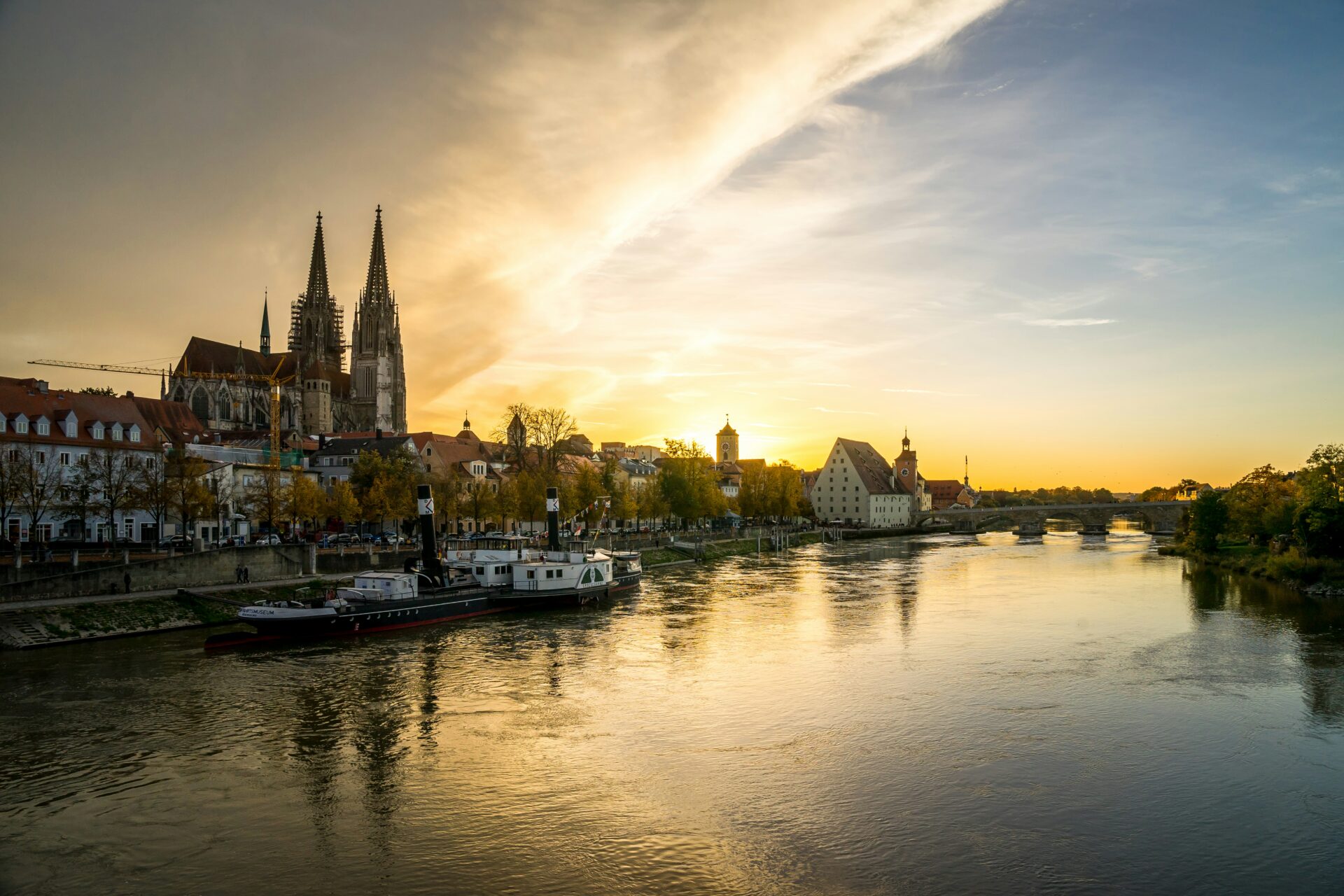
Ascending the Steeple: The Ultimate Challenge
The climb up Ulm Minster’s steeple is both a physical test and an unforgettable thrill.
From narrow winding staircases to breathtaking sights over Ulm and beyond, every part of the journey leaves a mark.
Preparing for the Climb: Tips and What to Expect
Before climbing, I checked opening hours and renovation updates. Restoration work sometimes closes parts of the tower.
Wearing sturdy shoes is a must—no sandals or heels. The old steps can get slippery.
There are over 760 steps up to the observation platform. No elevators here; you’ll be walking the whole way.
Bring water, especially on hot days. The stairway gets warm and stuffy.
Backpacks feel bulky in the tight spiral stairs, so I kept mine light. A few landings along the way let me catch my breath and read about the Minster’s history.
If you struggle with vertigo, like I do, prepare yourself for narrow stone stairs and dizzying heights.
Top tips:
| What to Bring | Why |
|---|---|
| Water Bottle | Stay hydrated |
| Comfortable Shoes | Safer on steep stairs |
| Camera/Phone | Capture the views |
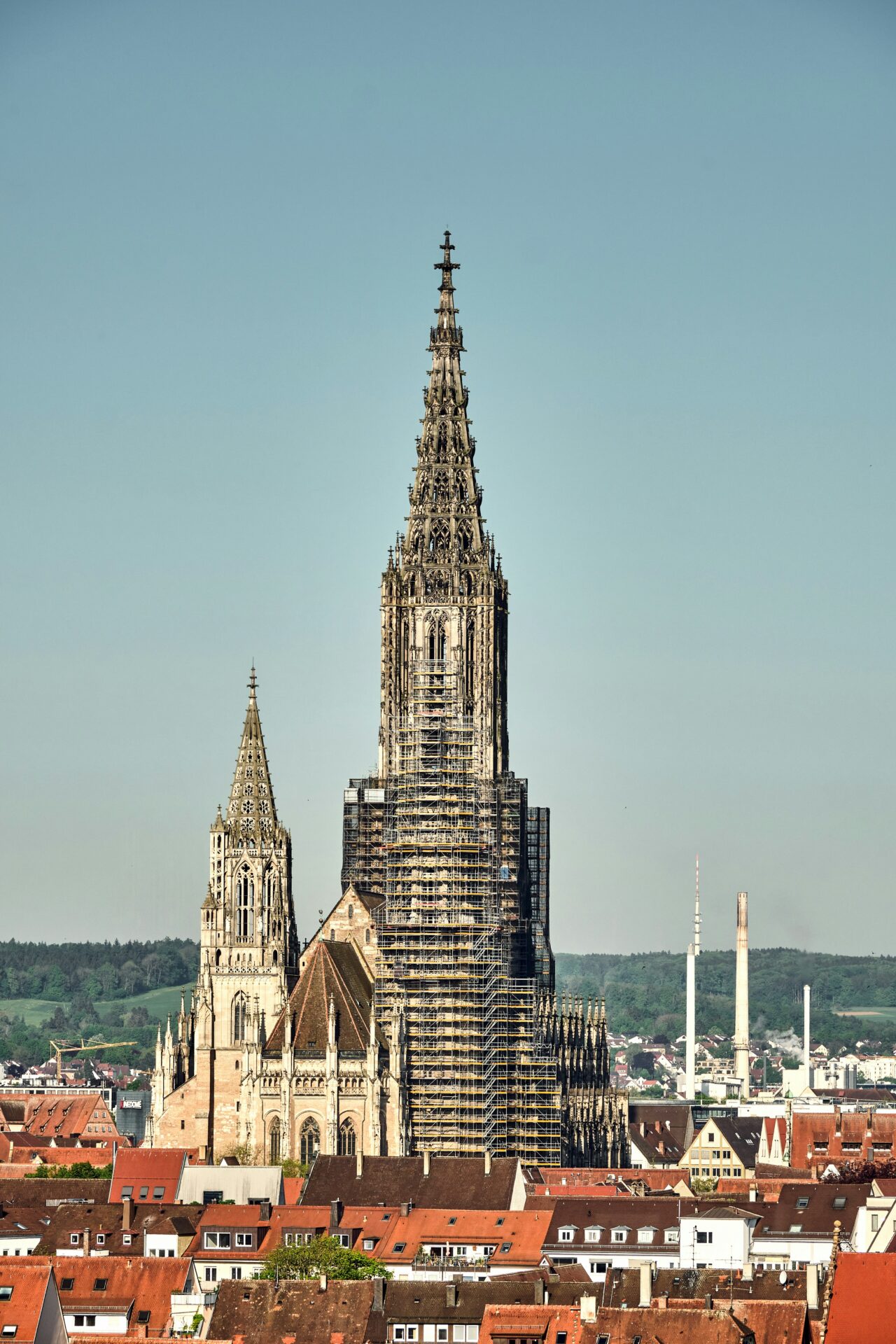
My Vertigo-Inducing Journey to the Top
The first steps inside the steeple felt exciting, but the spiral stairs quickly got tight. Passing people going the other way just made things trickier.
It really felt like climbing inside a stone tunnel.
As I climbed higher, small windows gave me peeks of the city below. The walls got steeper and the stairs narrower near the top, and every step made me more aware of the height.
Renovation scaffolding in places made the staircase feel even smaller.
Every rest stop felt like a lifesaver—fresh air, a moment to calm my nerves. My legs burned, my head spun, but encouragement from other climbers kept me going.
The final flight opened up onto the viewing platform. All the effort felt instantly worth it.
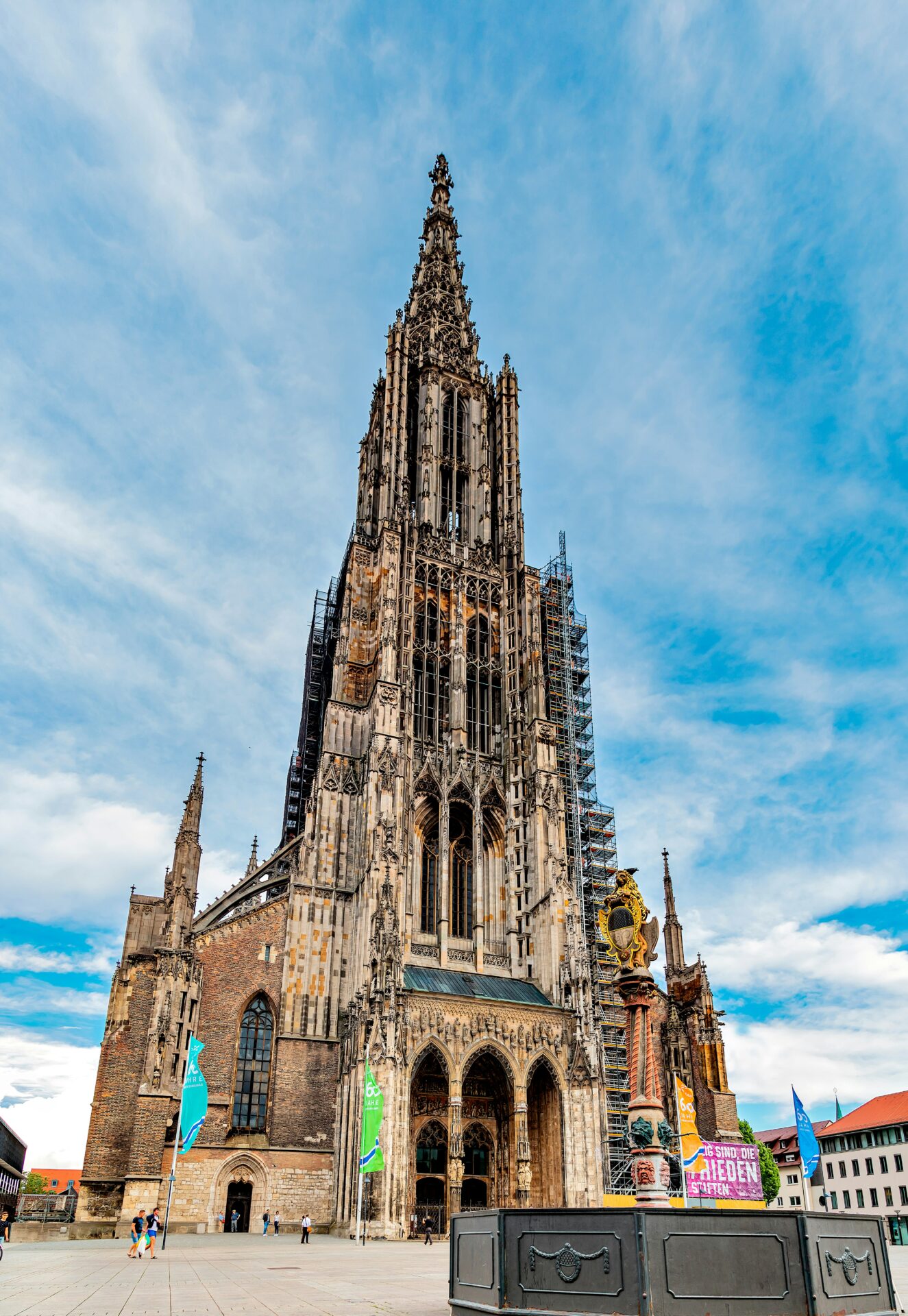
The Panoramic View: Sights from the Summit
Stepping onto the observation deck felt like stepping into another world. The wind was cooler, and all of Ulm stretched out below.
The Danube River cut through the rooftops, and on clear days, I could see all the way to the Alps.
Each direction offered something new. Church spires and red-tiled roofs popped out, while the renovation crews below looked tiny.
With binoculars, I picked out distant landmarks. Every photo I snapped showed off more detail.
I watched other tourists marvel at the view, and the sense of accomplishment washed over me.
The panoramic view was my ultimate reward—a sweeping, uninterrupted look at southern Germany from the tallest church steeple on earth.

Inside Ulm Minster: Artistry and Sacred Heritage
When I walked inside Ulm Minster, I immediately noticed the blend of art and spiritual heritage. Unique woodwork, breathtaking sculptures, and delicate carvings tell stories of faith, craftsmanship, and history.
The Spectacular Altar & Pulpit Canopy
The altar caught my eye right away. It’s both visually stunning and meaningful, acting as the main focus for worship.
Its Gothic details and careful design create a sense of awe.
The pulpit canopy, with soaring spires and intricate carvings, echoes the church’s dramatic vertical lines. I stood beneath it, just staring up at the woodwork spiraling toward the ceiling.
Light streamed through stained glass, throwing colors onto the altar and canopy. This play of light and art made the space feel alive.
Every detail was crafted to inspire and pull your attention toward the spiritual message. I found myself quietly admiring the skill of the artisans who shaped everything by hand.
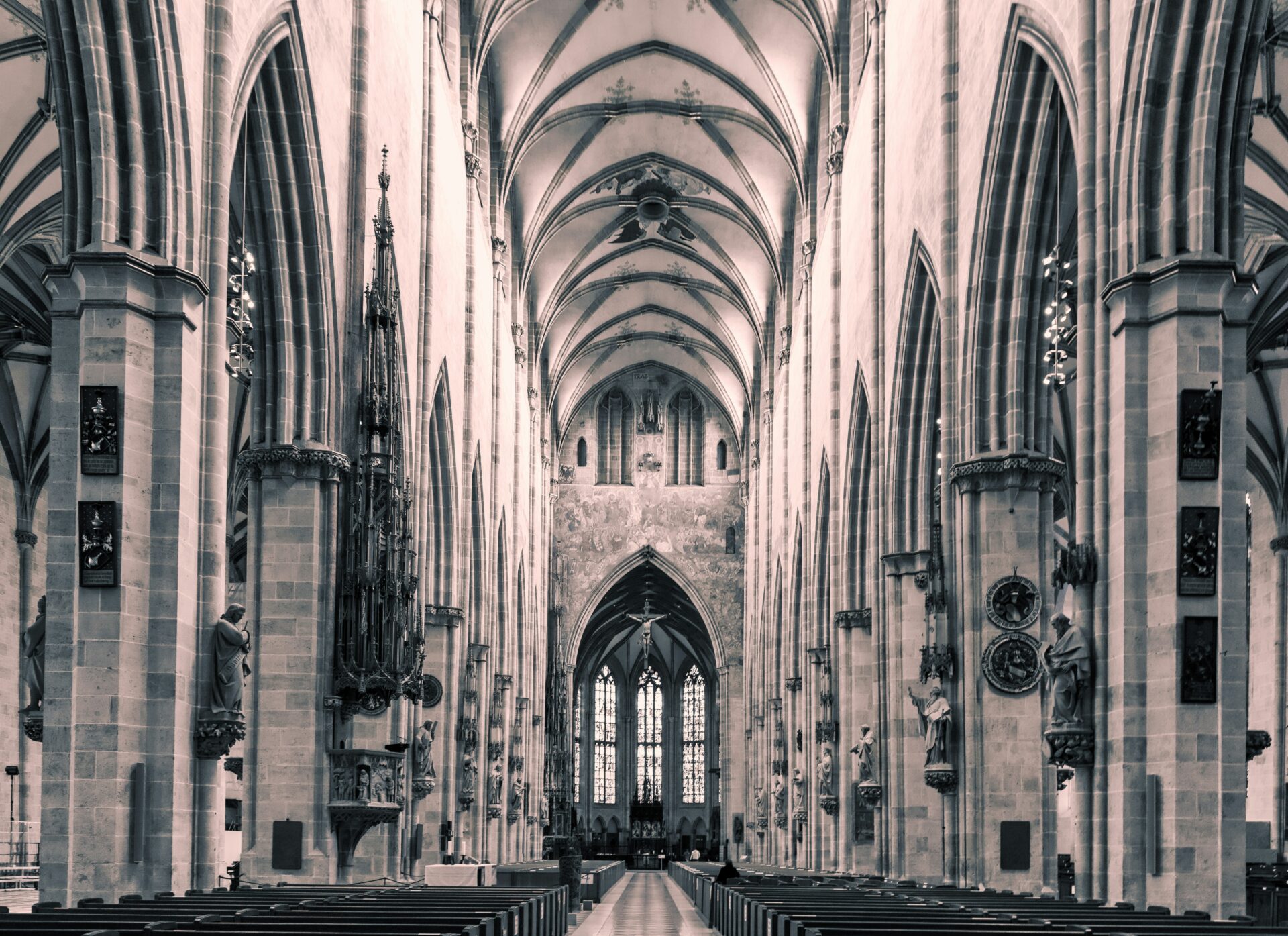
Jörg Syrlin the Elder: Masterpiece Choir Stalls
In the Minster’s choir, I found some of the finest woodcarving I’ve ever seen. Jörg Syrlin the Elder made these choir stalls in the 15th century, and they’re legendary for their detail.
Each seat shows carved figures—philosophers, church fathers, and even Syrlin himself. The busts peer out from the armrests and seem almost alive, as if frozen in thought centuries ago.
Their individuality stands out—intense expressions, detailed beards, tiny wrinkles, all sculpted from oak.
I lingered over the panels and realized how these stalls bridge art and faith. The carvings make history feel real and help visitors like me connect to Ulm’s medieval past.
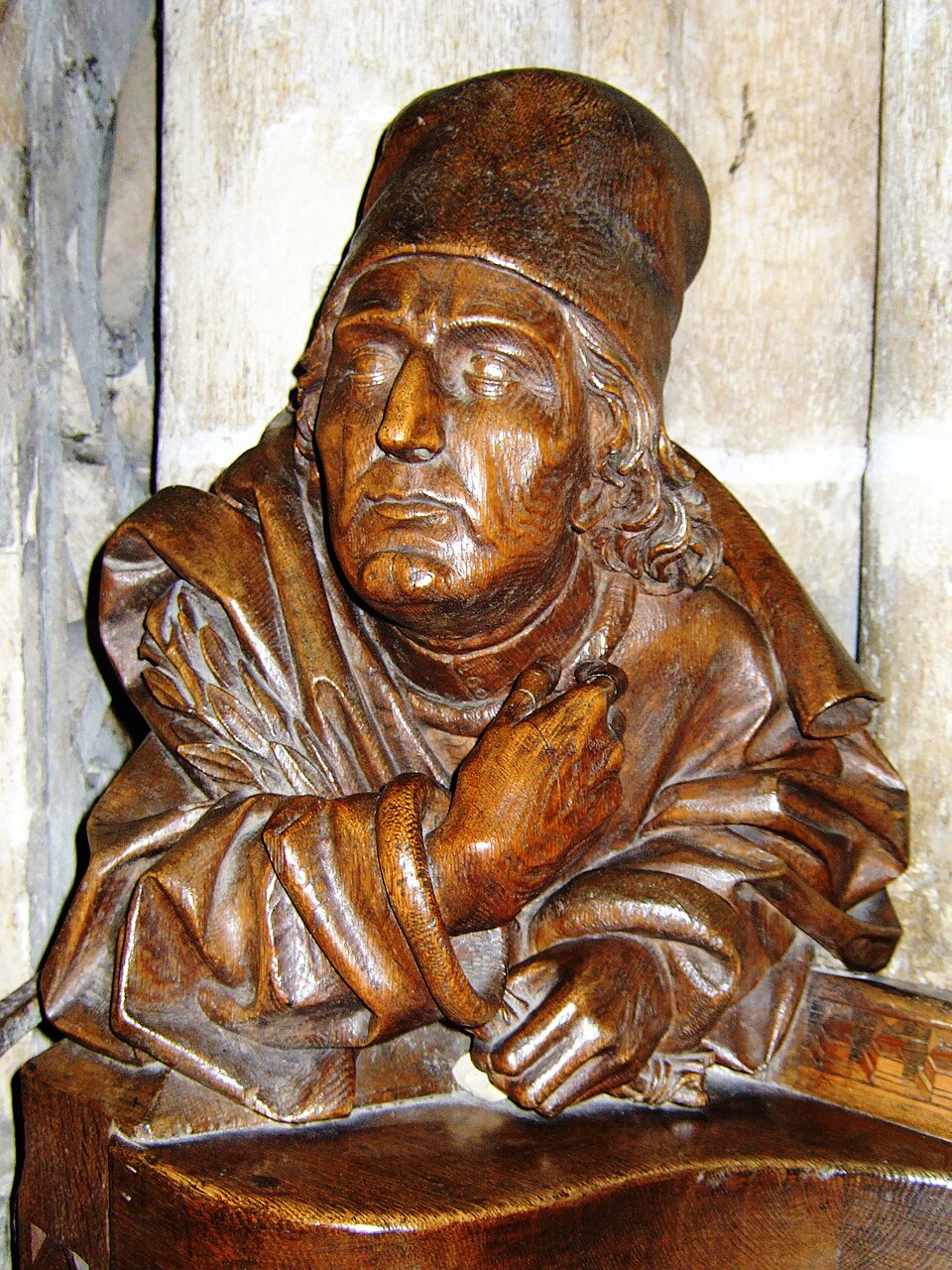
Hans Multscher’s Man of Sorrows
Finding Hans Multscher’s “Man of Sorrows” was a highlight. This sculpture serves as both artwork and a devotional image, dating from the 15th century.
It shows Christ after the crucifixion, wounded and sorrowful. The expression feels hauntingly real, with fine details in the face and body that draw you in.
Multscher was famous for bringing emotional depth to religious art, and it’s almost impossible not to pause and look closer.
Standing there, I felt the centuries slip away. The emotion carved in wood invites everyone to reflect on suffering, compassion, and hope.
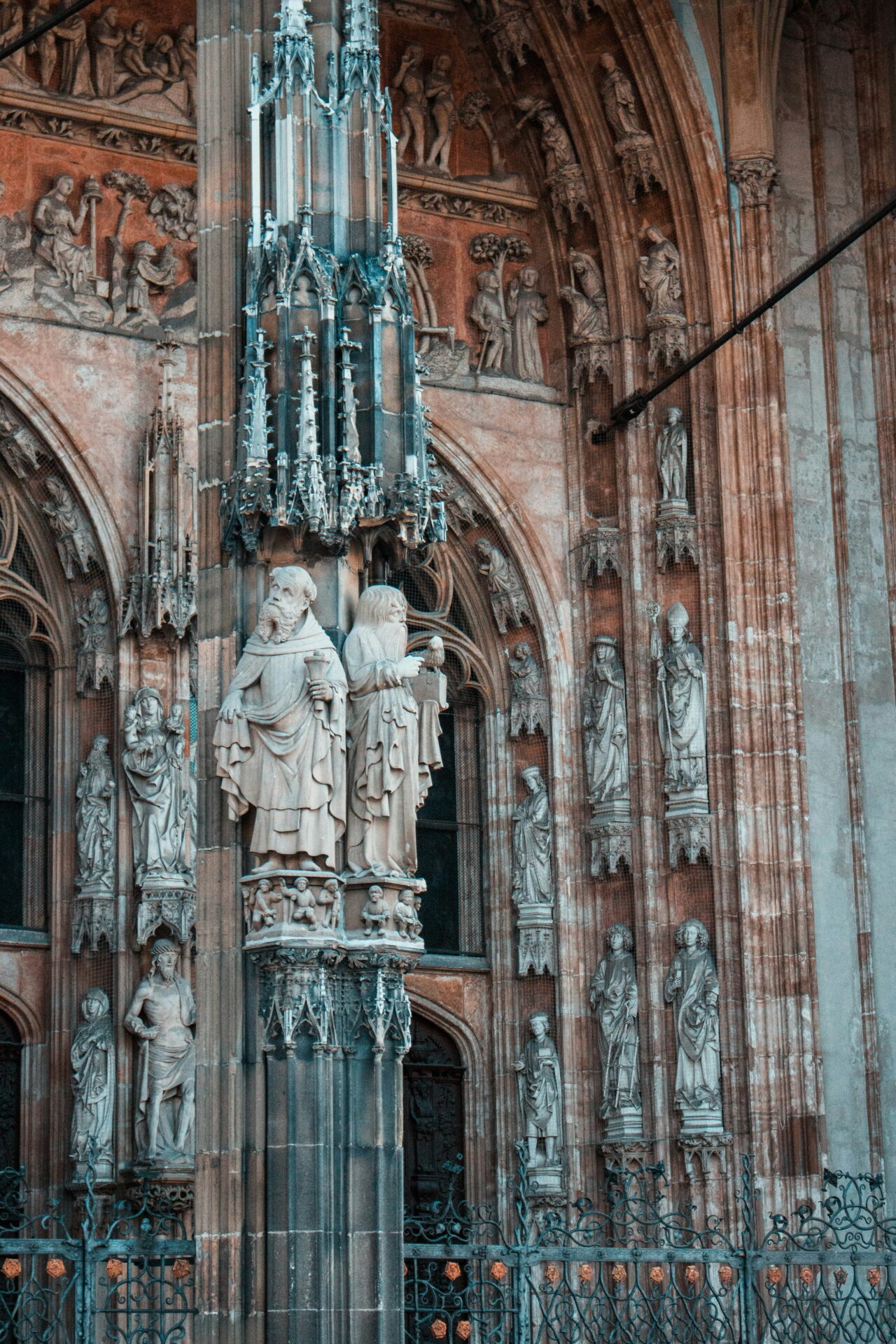
The Chancel and Intricate Carved Busts
As I moved toward the chancel, I found myself surrounded by carved busts lining the choir. Jörg Syrlin the Elder and his son, Jörg Syrlin the Younger, created many of these.
Every bust has its own personality. Some faces look wise and gentle, others stern or lost in thought.
Their spot near the altar highlights how important they are to the Minster’s spiritual and artistic life.
Here, I noticed the tiny details—the lines in faces, folds in robes, deep-set eyes. These works speak to the legacy of master carvers and turn the chancel into a medieval gallery.
For visitors like me, this part of the Minster offers a powerful sense of continuity—with art, faith, and the hands that brought both to life.
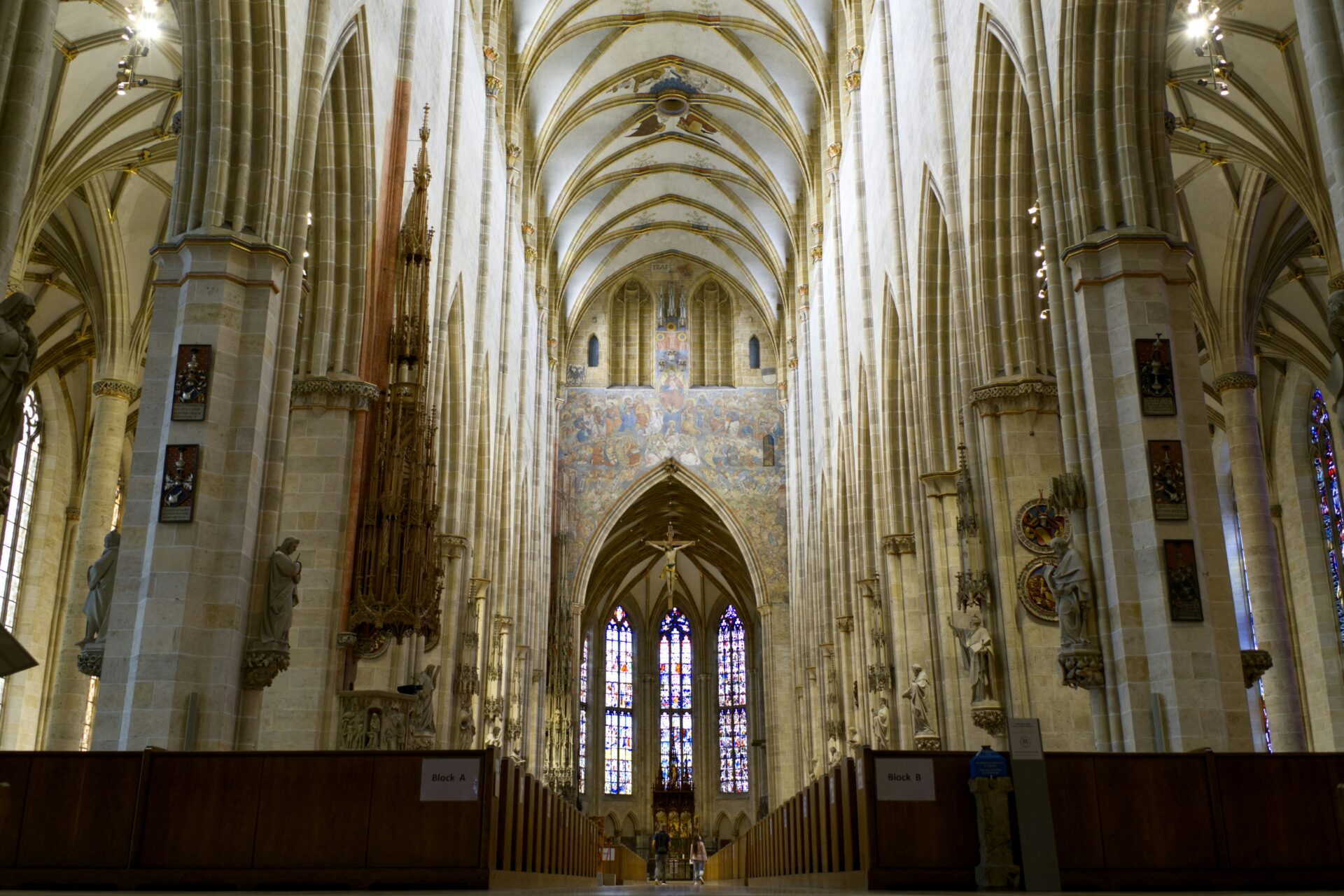
Master Builders and Preservation
As I walked through Ulm Minster, I kept thinking about the incredible people who built and protected it over the centuries.
Their vision and determination let visitors like me climb its dizzying steeple and admire the city from above.
Matthäus Böblinger and the Legacy of Master Builders
The construction of Ulm Minster took centuries. One name pops up above the rest: Matthäus Böblinger.
In the late 15th century, Böblinger led the way as a master builder. He really pushed the church’s grand Gothic style forward.
Böblinger’s designs helped shape that soaring spire you just can’t miss. It’s wild to think how much of his vision still defines Ulm Minster today.
Back then, master builders weren’t just construction workers; they were artists and big-picture thinkers. They didn’t just stack bricks—they figured out how arches and windows could stand for centuries.
You can still feel their purpose echoing inside the Minster. Every stone, every carving, every stained-glass panel shows the hands and imagination of people long gone.
Stand under the nave or squint up that spiral staircase, and you’ll know what I mean.
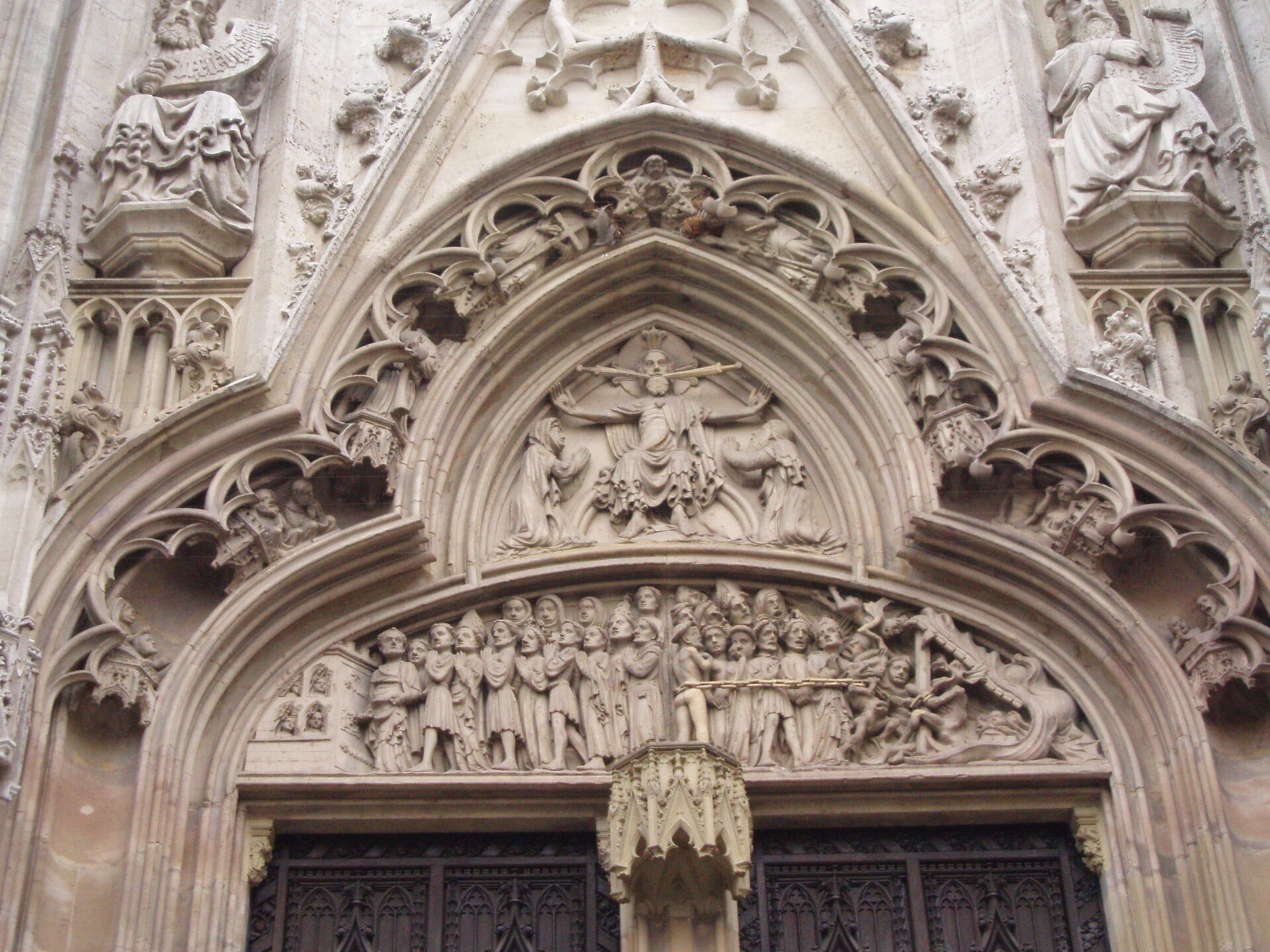
Renovation Work: Restoring a Landmark
Ulm Minster has weathered wars, storms, and pollution. It’s honestly amazing it’s still standing.
Restoration work never really stops. When I visited, scaffolding covered a few viewpoints.
Restoration experts jump between ancient methods and modern technology as they fix everything from fragile sculptures to that famous spire, which reaches 161.5 meters.
Common renovation tasks include:
| Project | Purpose | Method |
|---|---|---|
| Stone replacement | Repair weathered façades | Matching historic stonework |
| Glass restoration | Save stained-glass windows | Skilled handcraft |
| Structural fixes | Ensure tower’s safety and stability | Engineering expertise |
There’s always something under repair here. If you’re planning a visit, expect some construction zones, but you’ll also get to watch history being preserved right in front of you.
Honestly, that made the climb up the tower feel even more special for me.
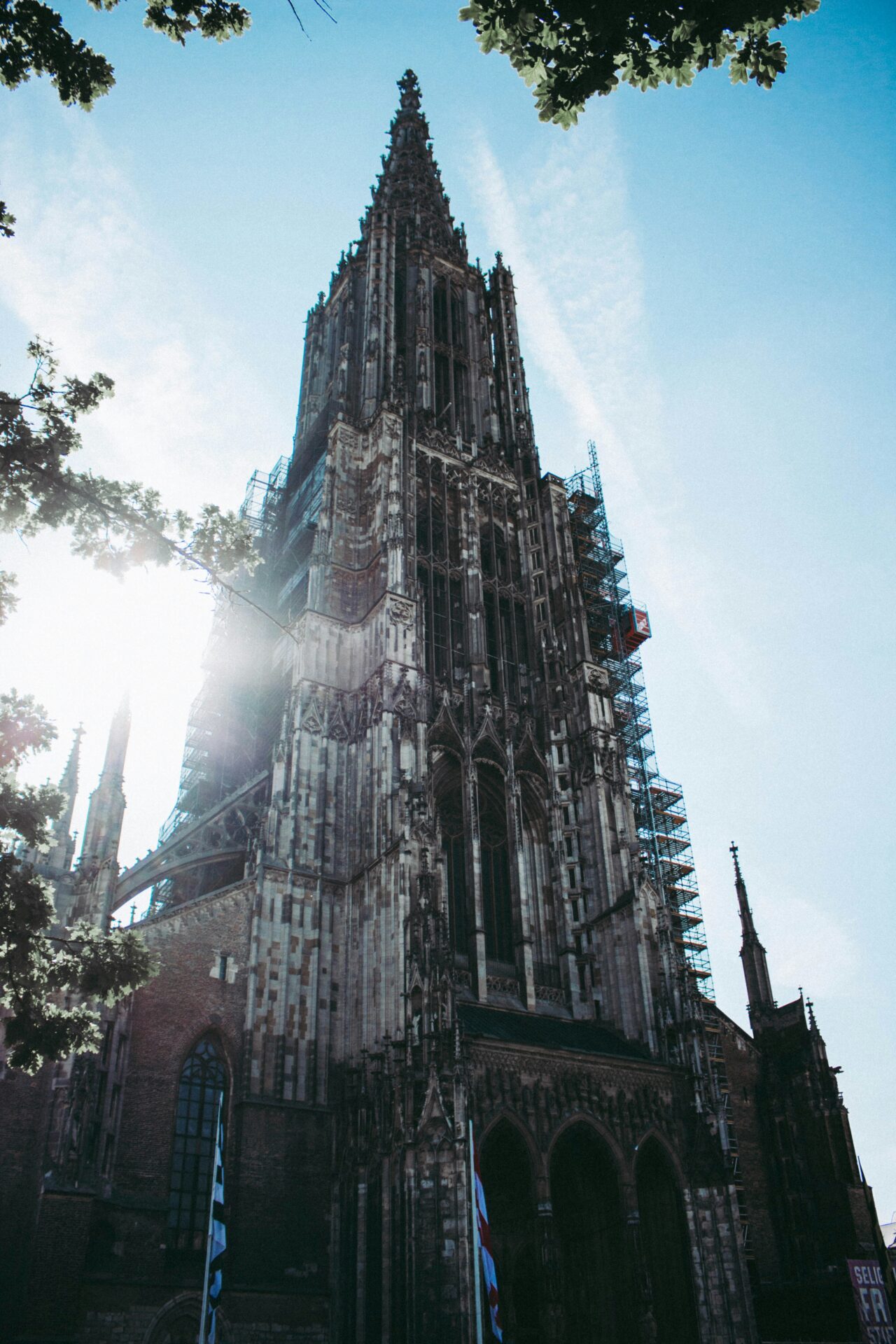
The Minster’s Role Through the Reformation
Ulm Minster played a pretty unique part in religious history.
People originally built it as a Roman Catholic church, but things changed during the Reformation in the 16th century.
It became Lutheran, and you can almost sense those big shifts when you wander through its halls.
This change touched more than just worship.
Art inside the Minster shifted, and daily life around the church started to look different too.
The Minster managed to adapt, letting in fresh ideas but still clinging to its old architectural bones.
Now, it stands as a hub for the local Lutheran community.
Honestly, knowing about all those layers—from its Catholic beginnings to its Lutheran present—made my visit feel richer.
Every chapter leaves a mark on the building, so Ulm Minster isn’t just a landmark.
It’s a living record of faith and resilience, really.

